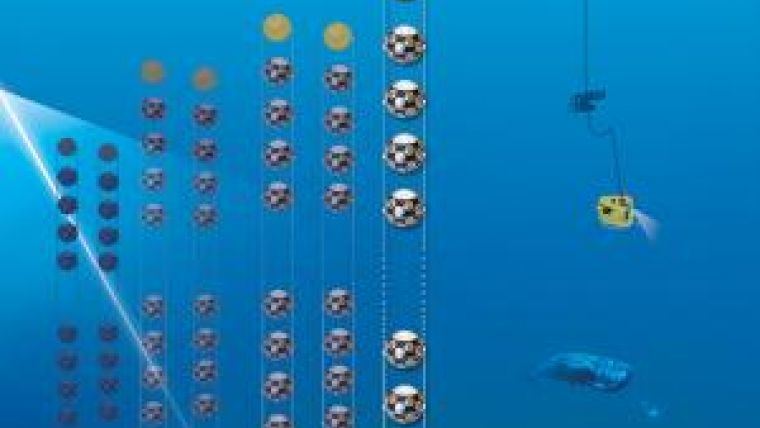MacArtney and Teledyne ODI Solve Infrastructure Challenge
In partnership with Teledyne ODI, MacArtney France will provide the underwater mateable connectors needed to realise the Mediterranean Eurocentre for Underwater Sciences and Technologies (MEUST) neutrino observatory project. The MEUST project is a second-generation deep-sea neutrino observatory infrastructure project integrated in the European network of neutrino telescope KM3NeT and deep-sea observatory EMSO.
This new infrastructure is the km3 scale successor of the revolutionary ANTARES underwater neutrino telescope for which MacArtney supplied all the cables and connectors. The MEUST infrastructure will be installed in the Mediterranean Sea approximately 45 kilometres off Toulon, France, at 2,500m water depth.
Detecting the Undetectable
The neutrino is the most elusive of the elementary particles and as they travel almost unimpeded through all matter, observable collisions with atoms are rare. However, because trillions of neutrinos pass through the earth every second, there are sufficient impact flashes to be detected by an array of sensors. These flashes can only be detected if all light sources are filtered out and therefore, the absolute darkness at 2,500 metres depth is the best place to observe them.
Scaling up the successful approach deployed by ANTARES, the MEUST project will utilise a vast array of underwater photomultiplier sensors to detect and study neutrino collisions. Compared to ANTARES, MEUST will ultimately increase the sensitivity of neutrino detection by more than a factor twenty (20x).
The infrastructure
The MEUST underwater infrastructure is mainly composed of several instrumented neutrino astronomy mooring lines called DU (Detection Units), which are connected to a seabed infrastructure of nodes and cables. One DU is comprised of neutrino detecting DOM (Digital Optical Modules) on an 800-metre flexible line.
The present phase of the project is bound for installation in 2014 and includes the main cable and one node onto which the first lines will be connected soon after.
The seafloor connectivity infrastructure needs to provide power and transmit data between instrumented mooring lines and shore. This is achieved by means of a telecommunication cable connected to an offshore node, onto which user ports allow the connection of lines using interconnection cables equipped with wet mateable connectors. MacArtney France will supply Teledyne ODI wet mateable connectors to equip the node and the interlink cables between detection units and between detection units and nodes.
Teledyne ODI wet mate interconnect technology is installed on many subsea observatory projects around the globe and a strong foothold of service, support and reliability was established with the ANTARES and other neutrino observatory projects.
- Also see the paper KM3NeT Future Deep-Sea Research Facility. Building a Cubic Kilometre Neutrino Telescope in the Deep Mediterranean Sea. Hydro International, November-December 2013.














